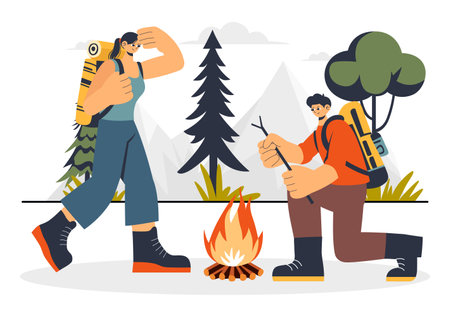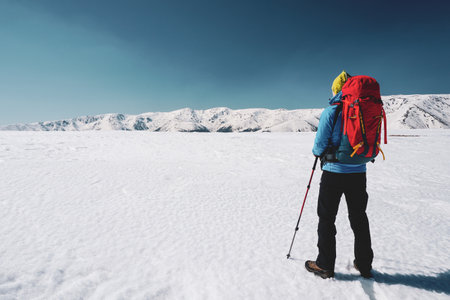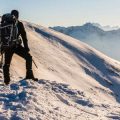Introduction to Glacier National Park
Glacier National Park, often called the “Crown of the Continent,” is one of Americas most celebrated natural treasures. Nestled in the northern Rockies of Montana, this park covers over one million acres of rugged wilderness, crystal-clear lakes, and awe-inspiring peaks. For hikers and nature lovers, Glacier offers a unique playground filled with iconic trails, dramatic landscapes, and an amazing diversity of plants and animals.
Unique Geography: Where Mountains Meet Glaciers
The park is famous for its dramatic geography. Jagged mountain ranges rise sharply from sweeping valleys, carved by ancient glaciers over thousands of years. Today, you can still see more than two dozen active glaciers scattered throughout the park—an impressive sight that gives Glacier its name. The Going-to-the-Sun Road, a legendary scenic drive, cuts through these mountains and provides easy access to some of the most breathtaking views in North America.
Biodiversity: A Wildlife Wonderland
Glacier National Park is home to an incredible variety of wildlife and plant species. From grizzly bears and mountain goats to wildflowers that burst into color each summer, the park supports life in every shape and size. Its diverse habitats range from alpine tundra to dense forests and tranquil lakeshores, making it a haven for both casual visitors and dedicated naturalists.
| Wildlife You Might See | Where to Spot Them |
|---|---|
| Grizzly Bears & Black Bears | Forested areas, meadows, near streams |
| Mountain Goats | High rocky cliffs & open alpine areas |
| Bighorn Sheep | Steep slopes & open grasslands |
| Bald Eagles & Ospreys | Around lakes & rivers |
| Moose | Wetlands & lakeshores |
A Legendary Status Among U.S. National Parks
Since its establishment in 1910, Glacier National Park has held a special place in the hearts of American adventurers. It’s not just the scenery that makes this park legendary—it’s also the sense of wildness and discovery that keeps hikers coming back year after year. Whether you’re planning your first visit or are a seasoned explorer, Glacier offers something unforgettable at every turn.
2. Essential Trail Etiquette and Safety in the Backcountry
Guidelines for Leave No Trace Practices
Exploring Glacier National Park is an unforgettable experience, but it’s important to respect the landscape so future hikers can enjoy it too. The Leave No Trace principles are your go-to rules for responsible hiking. Here’s a quick reference:
| Principle | What It Means for Hikers |
|---|---|
| Plan Ahead & Prepare | Check trail conditions, pack extra layers, food, water, and navigation tools. |
| Travel & Camp on Durable Surfaces | Stick to marked trails and established campsites to protect fragile plants. |
| Dispose of Waste Properly | Pack out all trash (even crumbs) and use restrooms or dig a small hole 6-8 inches deep for waste if necessary. |
| Leave What You Find | Don’t pick wildflowers or take rocks. Snap a photo instead! |
| Minimize Campfire Impact | Use a camp stove. Fires are restricted in many areas due to wildfire risk. |
| Respect Wildlife | Observe animals from a safe distance—never approach or feed them. |
| Be Considerate of Others | Yield to uphill hikers, keep noise down, and greet others with a friendly “hello.” |
Wildlife Safety: Tips for Bear Country and More
Glacier is home to grizzly and black bears, mountain goats, moose, and more. Staying safe means being aware and prepared:
Bears: Staying Safe in Their Territory
- Carry Bear Spray: Always have bear spray handy and know how to use it.
- Hike in Groups: More people = less chance of surprise encounters.
- Make Noise: Talk, clap, or sing—especially around blind corners or dense brush.
- Store Food Properly: Use bear lockers at campsites or hang food at least 10 feet off the ground and 4 feet from tree trunks.
- If You See a Bear: Stay calm. Back away slowly—never run. If a bear approaches, stand your ground and use your bear spray if needed.
Other Wildlife Encounters
- Don’t Feed Animals: Human food is dangerous for wildlife.
- Keep Your Distance: At least 100 yards from bears and wolves, 25 yards from other animals like deer or elk.
- No Selfies with Wildlife: That close-up shot isn’t worth the risk!
Preparedness for Glacier’s Rugged Terrain
| Packing Essentials for Glacier Trails | Description/Tip |
|---|---|
| Layered Clothing | The weather changes quickly—even in summer! Bring rain gear and warm layers. |
| Tough Footwear | A sturdy pair of hiking boots with good ankle support is a must on rocky paths. |
| Sufficient Water & Snacks | Lakes may look clear but always filter water before drinking. Bring high-energy snacks like trail mix or jerky. |
| Navigational Tools | A map, compass, or GPS device helps you stay on track—cell service is spotty at best. |
| Sunscreen & Bug Spray | The sun is strong at high elevations; mosquitoes can be relentless near lakes and creeks. |
If You Get Lost or Injured on the Trail…
- Stay Calm: Stop moving, assess your situation, and don’t wander further off-trail.
- S.T.O.P. Method: Stop, Think, Observe (look for landmarks), Plan your next steps.
- Mental Preparedness: Always tell someone your planned route before heading out—it could save your life if you need help finding your way back.
Treat every hike as an adventure—and remember that preparation and respect for nature make Glacier National Park safer for everyone who loves its wild beauty.

3. Iconic Hikes: Must-Do Trails for Every Adventurer
Glacier National Park is a true hiker’s paradise, offering a range of trails that showcase jaw-dropping scenery and unforgettable experiences. Whether you’re a first-timer or a seasoned trekker, these iconic hikes are essential stops on your Glacier adventure. Let’s break down some of the park’s most famous routes, their highlights, and what challenges to expect on the trail.
Highline Trail
This legendary hike runs along the Continental Divide and offers sweeping views of the park’s rugged peaks and wildflower-filled meadows. The Highline Trail is especially famous for its “Garden Wall” section, where the path hugs a cliffside—don’t worry, there’s a cable handrail for extra security! Watch for mountain goats and marmots along the way.
| Trail Feature | Details |
|---|---|
| Distance (one-way) | ~11.8 miles from Logan Pass to The Loop |
| Elevation Gain | Approx. 800 feet (main trail), with some ups and downs |
| Highlights | Wildlife sightings, panoramic vistas, alpine meadows |
| Challenges | Narrow ledges, exposure to heights, variable weather |
Grinnell Glacier Trail
If you want to see one of the park’s last remaining glaciers up close, this trail is your ticket. The hike winds past turquoise lakes and through valleys bursting with wildflowers before reaching stunning views of Grinnell Glacier itself. Be prepared for snow patches even in midsummer!
| Trail Feature | Details |
|---|---|
| Distance (round-trip) | ~10.6 miles from Many Glacier Hotel parking lot |
| Elevation Gain | Approx. 1,600 feet |
| Highlights | Lakeside views, waterfalls, glacier overlook |
| Challenges | Slick sections near waterfalls, possible bear activity, steep ascent at end |
Hidden Lake Overlook Trail
This family-friendly hike starts at Logan Pass Visitor Center and leads you across boardwalks through fields dotted with wildflowers and mountain goats. It ends at an overlook with a postcard-perfect view of Hidden Lake and Bearhat Mountain—perfect for photos!
| Trail Feature | Details |
|---|---|
| Distance (round-trip) | ~2.7 miles to the overlook (longer if you continue down to the lake) |
| Elevation Gain | Approx. 540 feet to overlook; additional descent to reach the lake shore |
| Highlights | Breathtaking lake views, wildlife spotting, wildflowers in summer |
| Challenges | Crowds during peak season, snow on trail early/late in season, sun exposure above treeline |
4. Jaw-Dropping Scenery: Where to Find the Best Vistas
Prime Viewpoints for Epic Glacier National Park Views
If you’re chasing those postcard-perfect moments, Glacier National Park delivers in spades. Whether you want sweeping mountain panoramas or tranquil lakeside reflections, here are some must-see spots that will have your camera working overtime.
Top-Rated Lookouts and Photography Spots
| Location | What Youll See | Best Time to Visit |
|---|---|---|
| Logan Pass | Wildflower meadows, alpine vistas, possible mountain goat sightings | Early morning (fewer crowds, golden light) |
| Hidden Lake Overlook | Sweeping lake views framed by Bearhat Mountain | Late afternoon to sunset |
| Many Glacier Area | Dramatic peaks, glacial lakes, chance to spot wildlife | Sunrise for magical reflections on the water |
| Apgar Lookout | Panoramic views of Lake McDonald and surrounding valleys | Midday for clear skies and long-range visibility |
| Going-to-the-Sun Road Pullouts | Breathtaking roadside vistas without a hike required | Mornings or late afternoons to avoid traffic and haze |
Lesser-Known Gems Worth the Trek
- Numa Ridge Lookout: Tucked away near Bowman Lake, this trail rewards hikers with expansive views and far fewer people than Logan Pass. Pack a lunch and soak in the peace and quiet.
- Snyder Ridge: For those wanting solitude, this less-trafficked trail offers unique angles of Lake McDonald and forested ridges—great for moody photography.
- Boulder Pass Trail: Remote but incredibly scenic, especially if you’re up for a backcountry adventure. The high-elevation views stretch for miles and are truly unforgettable.
Tips for Capturing Glacier’s Scenic Backdrops Like a Pro:
- Bring a wide-angle lens to fit those massive landscapes into your frame.
- The golden hour (right after sunrise or before sunset) is perfect for soft light and vibrant colors.
- If you’re using your phone, try panorama mode at big viewpoints like Logan Pass or Apgar Lookout.
- Always pack extra batteries—cool mountain air can drain them fast!
- Please stay on marked trails and respect wildlife; Glacier’s beauty is best enjoyed responsibly.
No matter where you wander in Glacier National Park, stunning scenery is just around the bend. From iconic overlooks to hidden treasures off the beaten path, your next jaw-dropping vista is waiting—just don’t forget your camera!
5. Planning Your Trip: When to Visit and What to Pack
Best Seasons for Hiking in Glacier National Park
Timing your visit is key for an unforgettable hiking experience in Glacier National Park. Most trails are accessible from late June through mid-September, when snow has melted and the famous Going-to-the-Sun Road is fully open. July and August offer warm days and cool nights, making these months the most popular for hikers. If you prefer fewer crowds and a touch of autumn color, early September is a hidden gem—just be prepared for cooler temperatures and shorter daylight hours.
Seasonal Overview
| Season | Trail Access | Weather | Crowds |
|---|---|---|---|
| Late June | Most lower-elevation trails open; higher passes may still have snow | Mild; possible rain or chilly mornings | Moderate |
| July – August | Nearly all trails open | Warm days (60s-80s °F), cool nights (30s-40s °F) | High |
| Early September | All major trails open; some services begin closing after Labor Day | Crisp, cooler air; chance of early snow at elevation | Low to moderate |
| October – May | Many trails closed due to snow; limited facilities | Cold, snowy, unpredictable weather | Very low |
What to Pack: Gear Essentials for Glacier’s Weather
The weather in Glacier can change in a heartbeat—even during summer—so packing smart is crucial. Layering is the golden rule. Here’s a quick checklist for day hikes:
| Item | Why You Need It |
|---|---|
| Waterproof Rain Jacket & Pants | Shelters you from sudden showers or wind on exposed ridges. |
| Synthetic or Wool Base Layers | Keeps you warm even if damp; avoid cotton. |
| Hat & Gloves (even in summer!) | Mornings and evenings can be chilly, especially at higher elevations. |
| Sturdy Hiking Boots or Shoes | Tackle rocky or muddy terrain with good grip and ankle support. |
| Daypack with Hydration System or Water Bottles | No potable water on many trails—carry enough for your hike. |
| Sunscreen & Sunglasses | The sun can be intense at altitude—even on cloudy days. |
| Trekking Poles (optional) | Eases strain on knees during steep descents or long mileage. |
| Bearspray (mandatory) | Bears call Glacier home—make sure you know how to use it! |
| Trail Map & Compass/GPS App (offline) | Poor cell service is common; don’t rely solely on your phone. |
| Snacks/Energy Food & First Aid Kit | You’ll burn calories fast—fuel up and stay safe. |
Permits, Shuttles, and Local Resources You Should Know About
Permits & Reservations
If you plan to do any overnight backpacking, you’ll need a backcountry permit—which often requires advance reservations through the official National Park Service website. For day hikes, no permits are needed, but certain parking areas and popular trailheads fill up fast, so arriving early is smart. In peak season, vehicle reservations are required for access to Going-to-the-Sun Road—check current guidelines before your trip.
Park Shuttles & Transportation Tips
The free park shuttle operates along Going-to-the-Sun Road from late June through Labor Day. It’s a great way to avoid parking hassles at busy trailheads like Logan Pass or Avalanche Lake. Remember: shuttles can fill quickly during mid-morning hours. Consider starting early or planning afternoon hikes when demand drops off.
Local Resources & Trail Updates
The Apgar and St. Mary Visitor Centers are your go-to stops for up-to-date trail conditions, maps, ranger advice, and bear activity alerts. Rangers are friendly and happy to help first-time visitors pick suitable routes based on current conditions. Many local outfitters in West Glacier also offer gear rentals (like bearspray) and shuttle services if you’re venturing off the main tourist corridors.
Your Adventure Starts with Good Prep!
A little planning goes a long way toward an awesome—and safe—Glacier National Park hiking trip. Check the weather forecast daily, talk to rangers about trail updates, pack smart, and enjoy every step on those iconic Montana trails!


